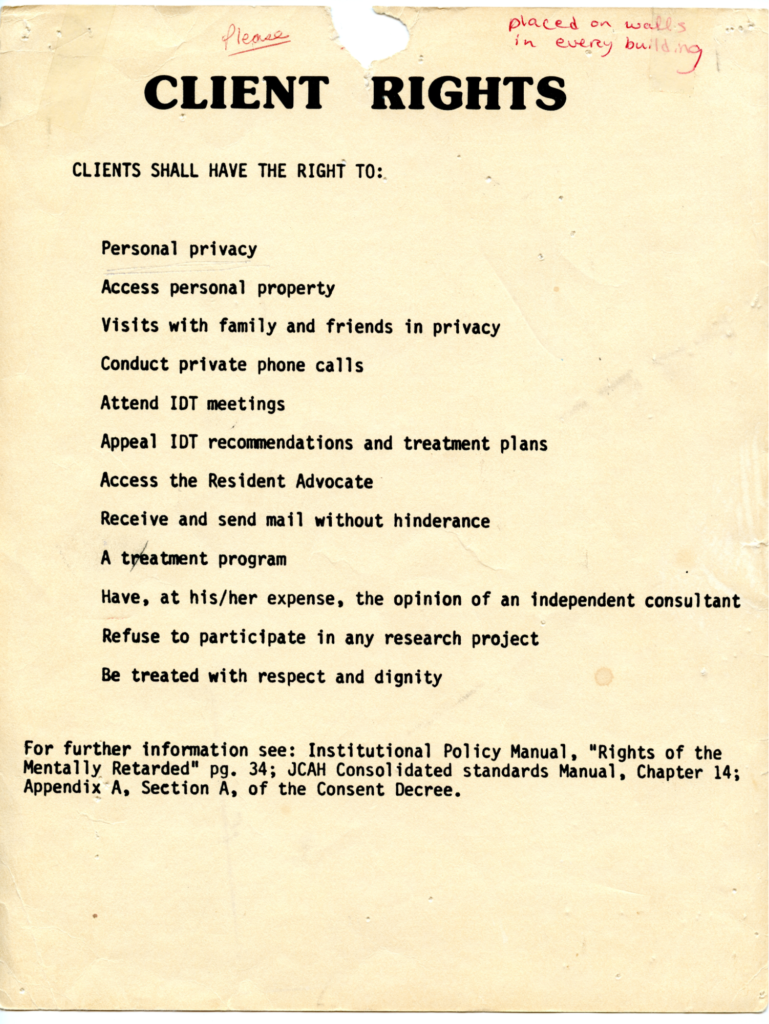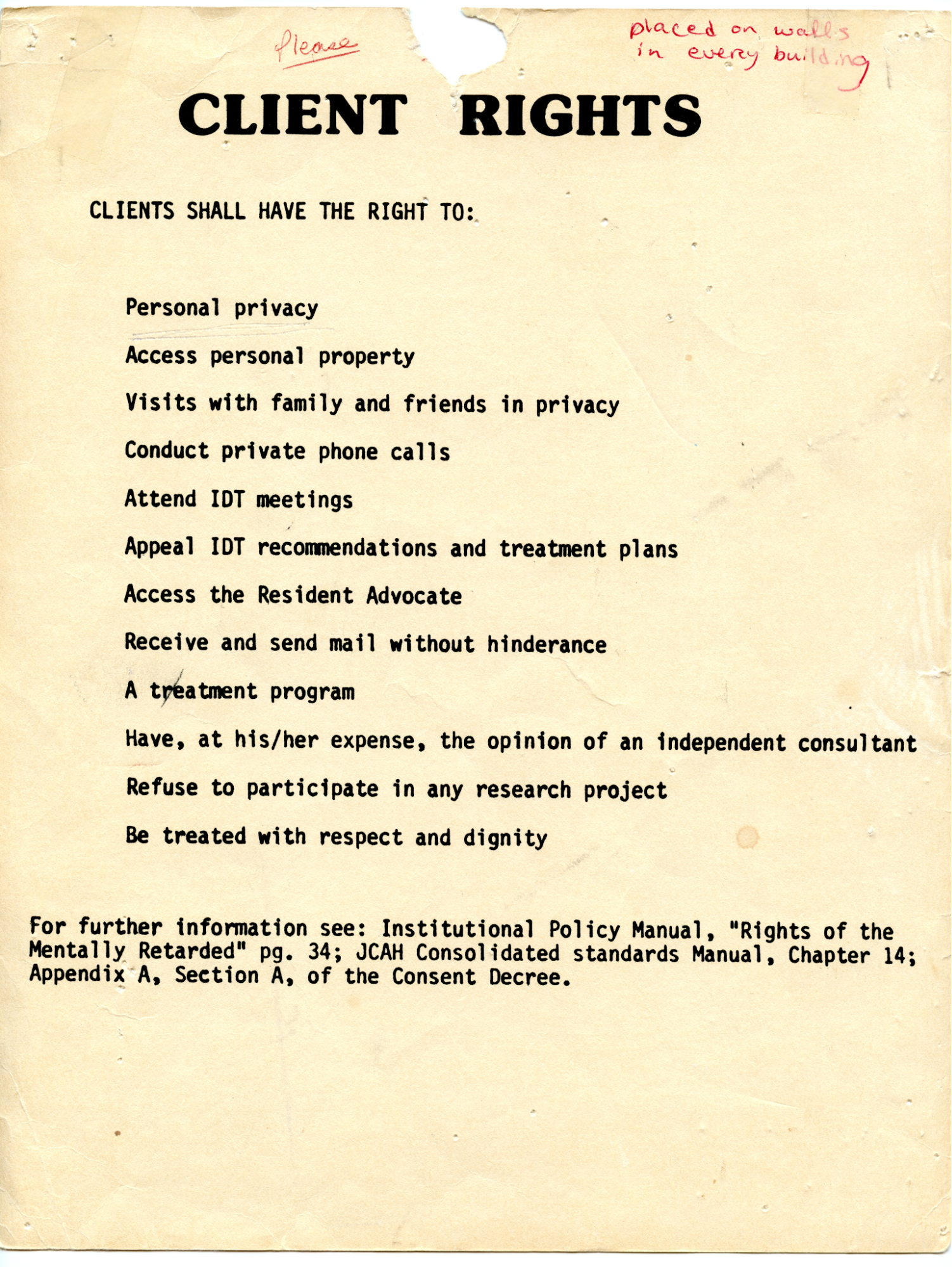The transition from institutional to community living and care was not easy for many Pineland residents, nor was it easy for those setting up and trying to operate housing and various services.
For instance, in the institution, residents had virtually no choices about what and when they ate – and many had no idea of where food comes from, how to prepare it, how to clean up afterwards. Nor had they had choices about much else in their lives. In the community – group homes, foster homes, their family homes, or supervised apartments – they were expected to make choices and take responsibility for many aspects of their lives.

They needed to learn many new skills and behaviors – and staff needed to learn not only how to help them gain those skills, but to not do things for them that they could do for themselves.
As at Pineland, training and retaining qualified staff was an issue. In addition, some existing housing in the community did not meet the consent decree standards that limited the size of facilities and how many people could be in one room.
Parents and family members also had to find new ways to become involved and learn to negotiate a new system to advocate for their children. Respite care, required by the consent decree, needed to be developed.
Waiting lists for services were an ongoing problem. As during the era of institutions, there was never enough funding put towards services, and staff were chronically underpaid.



